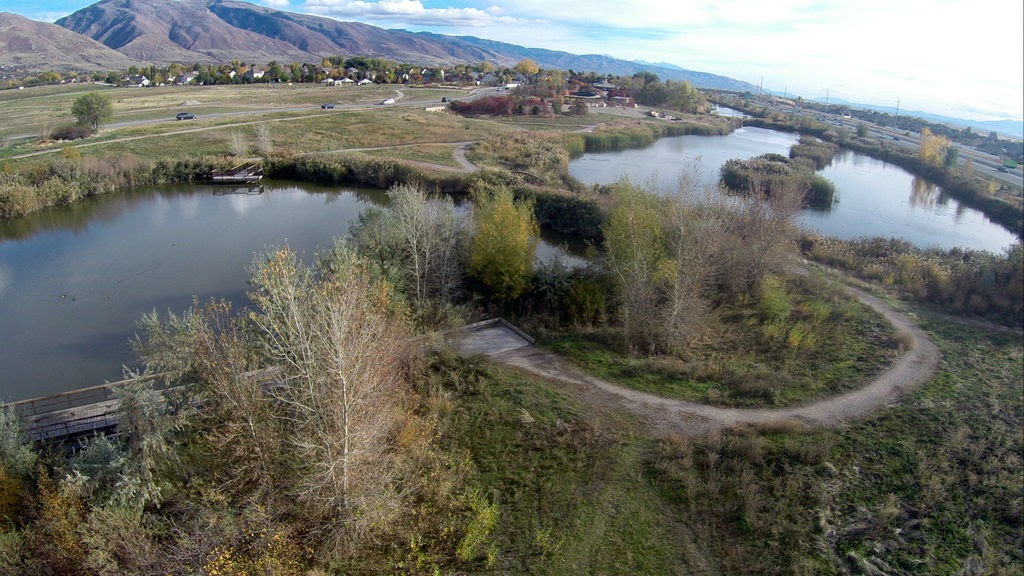The Kaysville Ponds

History/Background
Long before they became the focal point of wetland education programs, the USU Botanical Center ponds were local landmarks and vital to early Kaysville settlers. The land has exchanged hands many times since the early 1800’s but officially became part of Utah State University in 1994. Using grant funding, USU was able to dredge the ponds and create an urban fishery. In 1999, USU moved the Botanical Center from Farmington to Kaysville and in 2008 the Wetland Discovery Point, Utah’s first LEED Platinum Certified public building, was built on the west side of Slough Pond. The Wetland Discovery Point serves as a center for stewardship, education and community programs, classes and events.
From North to South the ponds are named:
- Blood’s Pond
- Slough Pond
- Barton’s Pond
- South Pond
Barton pond is named after Peter Barton, a local farmer and rancher who was one of the original homesteaders in the Kaysville area.
Please click here for a map of the USU Botanical Center.
Function/Purpose - Stormwater Management
All four ponds are stormwater retention ponds for Kaysville City and most of the water collected is runoff from the south-end of Kaysville and Fruit Heights. Stormwater is generated from rain and snowmelt events that flow over land and impervious surfaces, such as paved streets and parking lots, and does not soak into the ground. The runoff picks up pollutants like trash, chemicals, oils, and dirt/sediment along the way, which can be harmful to our streams and lakes.
The wetlands around the ponds acts as a natural filter, by removing sediment and toxins in the water, before the water continues, eventually entering the Great Salt Lake. The wetlands also provide crucial habitat for birds and other wildlife.
The Kaysville Ponds are part of a larger stormwater management system. Near the north end of Blood’s pond, there is an input that feeds water from the detention basin at Davis Technical College in Kaysville, which is fed by the Burton Elementary School detention basin. Detention basins are used for water storage and allow the stored water to eventually drain out without causing flooding.

